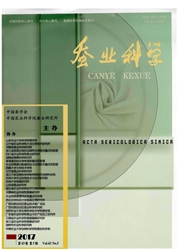

 中文摘要:
中文摘要:
通常在犯罪场面发现 fingermarks 的大多数是潜伏的并且,这样为检测潜伏的 fingermarks 的一个有效方法是很重要的。然而,传统的发展中技术有象低察觉敏感,高背景干扰,复杂操作,和高毒性那样的缺点。处理这挑战,我们采用了荧光灯 NaYF 4:Yb,Er upconversion nanoparticles (UCNP ) 它能发荧光可见的光什么时候由 980 nm 使对人安全的在红外线附近的光激动,到污点,各种各样的底层上的潜伏的 fingermarks 出现。 UCNP 成功地被用作一篇小说荧光灯为有包括非渗入的材料(玻璃,大理石,铝合金表,不锈钢表,铝陪衬,和塑料卡片)的各种各样的底层上的高敏感,低背景,高效率,和低毒性的潜伏的 fingermarks 的察觉的标签,渗入半的材料(地板皮革,陶器的瓦,木头地板,和油漆木头),和象报纸的各种各样的类型那样的渗透的材料。这个工作证明 UCNP 是一万用荧光灯为几乎任何东西上的 fingermarks 的灵巧的察觉的标签材料,在法庭的科学启用他们的实际应用。
 英文摘要:
英文摘要:
The most commonly found fingermarks at crime scenes are latent and, thus, an efficient method for detecting latent fingermarks is very important. However, traditional developing techniques have drawbacks such as low detection sensitivity, high background interference, complicated operation, and high toxicity. To tackle this challenge, we employed fluorescent NaYF4:Yb, Er upconversion nanoparticles (UCNPs), which can fluoresce visible light when excited by 980 nm human-safe near-infrared light, to stain the latent fingermarks on various substrate surfaces. The UCNPs were successfully used as a novel fluorescent label for the detection of latent fingermarks with high sensitivity, low background, high efficiency, and low toxicity on various substrates including non-infiltrating materials (glass, marble, aluminum alloy sheets, stainless steel sheets, aluminum foils, and plastic cards), semi-infiltrating materials (floor leathers, ceramic tiles, wood floor, and painted wood), and infiltrating materials such as various types of papers. This work shows that UCNPs are a versatile fluorescent label for the facile detection of fingermarks on virtually any material, enabling their practical applications in forensic sciences.
 同期刊论文项目
同期刊论文项目
 同项目期刊论文
同项目期刊论文
 Preparation of porous scaffolds from silk fibroin extracted from the silk gland of Bombyx mori (B. m
Preparation of porous scaffolds from silk fibroin extracted from the silk gland of Bombyx mori (B. m Bio-Templated Growth of Bone Minerals from Modified Simulated Body Fluid on Nanofibrous Decellulariz
Bio-Templated Growth of Bone Minerals from Modified Simulated Body Fluid on Nanofibrous Decellulariz NIR-induced highly sensitive detection of latent fingermarks by NaYF4:Yb,Er upconversion nanoparticl
NIR-induced highly sensitive detection of latent fingermarks by NaYF4:Yb,Er upconversion nanoparticl Biomimetic nucleation of hydroxyapatite crystals mediated by Antheraea pernyi (A. pernyi) silk seric
Biomimetic nucleation of hydroxyapatite crystals mediated by Antheraea pernyi (A. pernyi) silk seric Binrui Cao, Yang M, Ye Zhu, Xuewei Qu and Chuanbin Mao. Stem Cells Loaded with Nanoparticles as In V
Binrui Cao, Yang M, Ye Zhu, Xuewei Qu and Chuanbin Mao. Stem Cells Loaded with Nanoparticles as In V Fabrication of a novel blended membrane with chitosan and silk microfibers for wound healing: charac
Fabrication of a novel blended membrane with chitosan and silk microfibers for wound healing: charac Regulating of surface roughness of mineralized Antheraea pernyi silk sericin film and its effects on
Regulating of surface roughness of mineralized Antheraea pernyi silk sericin film and its effects on Reiterated Targeting Peptides on the Nanoparticle Surface Significantly Promote Targeted Vascular En
Reiterated Targeting Peptides on the Nanoparticle Surface Significantly Promote Targeted Vascular En Biomineralization of natural collagenous nanofibrous membranes and their potential use in bone tissu
Biomineralization of natural collagenous nanofibrous membranes and their potential use in bone tissu Ca2+-induced self-assembly of Bombyx mori silk sericin into a nanofibrous network-like protein matri
Ca2+-induced self-assembly of Bombyx mori silk sericin into a nanofibrous network-like protein matri NIR-induced highlysensitive detection of latent fingermarks by NaYF4:Yb,Erupconversion nanoparticles
NIR-induced highlysensitive detection of latent fingermarks by NaYF4:Yb,Erupconversion nanoparticles 期刊信息
期刊信息
